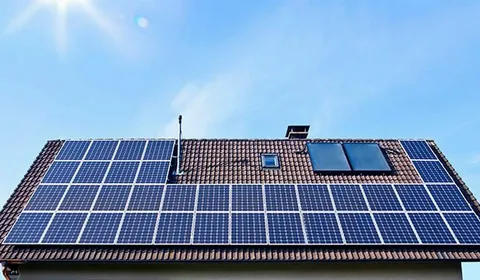Deep cycle batteries are the way to go when it comes to reliable and long-lasting power. These batteries are specially designed to provide a steady amount of energy over an extended period, making them perfect for a wide range of applications. In this blog post, we will explore deep-cycle batteries’ benefits, features, uses, advantages, maintenance tips, and how they compare to other battery types. By the end of this comprehensive guide, you’ll better understand why deep-cycle batteries are the superior choice for long-lasting energy solutions.
Understanding the Basics of Deep-Cycle Batteries
Deep-cycle batteries stand out in the realm of lead-acid batteries for their unique capability to be discharged and recharged numerous times. This contrasts sharply with starting batteries, crafted to deliver a quick, high-energy pulse for engine ignition. The construction of deep-cycle batteries allows them to distribute a consistent energy output for prolonged periods, making them perfectly suited to applications demanding a steady energy supply.
They thrive in environments ranging from renewable energy systems to electric vehicles and marine applications, underscoring their versatility. The deep discharge cycle these batteries can endure without compromising their longevity or performance is a testament to their robust design, tailored specifically for long-term, repetitive usage.
Their capacity to withstand frequent and extensive discharges makes them an indispensable component in systems requiring a reliable and sustained power source, embodying an essential solution for continuous energy demands.
Key Features of Lithium Battery
Lithium deep-cycle batteries are renowned for their exceptional performance, offering several key features that set them apart from traditional lead-acid counterparts. One of the most significant advantages is their high energy density, which enables these batteries to store more energy in a smaller space. This makes lithium batteries ideal for applications where space and weight are critical factors, such as in electric vehicles and portable solar power systems.
These batteries boast a longer lifespan, often capable of more than 2000 charge and discharge cycles while maintaining their capacity. This is significantly higher than what is typically observed with lead-acid batteries, making them a cost-effective solution over time. They also exhibit a lower self-discharge rate, meaning they retain their unused charge longer.
Furthermore, lithium battery can be charged faster, reducing downtime and enhancing efficiency in applications requiring frequent charging. Their ability to operate efficiently across various temperatures adds to their versatility. Lastly, the absence of maintenance requirements, such as watering and equalisation, simplifies their use and appeals to a broad spectrum of users. These features collectively contribute to the growing popularity of lithium deep-cycle batteries in providing long-lasting and reliable energy solutions.
Common Applications of Deep-Cycle Batteries
Deep-cycle batteries are the backbone for numerous applications, offering consistent and dependable power across various domains. In the realm of renewable energy, they are indispensable, storing electricity generated by solar panels and wind turbines, ensuring a stable energy supply regardless of weather conditions.
The mobility sector benefits greatly from these batteries, with electric vehicles (EVs), golf carts, and recreational vehicles (RVs) relying on their prolonged discharge capabilities for extended operational periods. The marine industry is another significant beneficiary, where deep-cycle batteries power everything from small boats to large yachts, providing energy for propulsion and onboard electrical needs without frequent recharging.
Additionally, they play a critical role in backup power systems, offering a safety net during power outages for homes, healthcare facilities, and data centres. Their reliability and longevity make them a preferred choice for powering off-grid solutions where conventional electricity sources are inaccessible. Across these diverse applications, deep-cycle batteries stand out for their ability to deliver sustained power, highlighting their versatility and importance in daily and specialised tasks.
Advantages of Using Lithium Batteries
Lithium deep-cycle batteries present many advantages that make them a standout option for those searching for efficient and reliable energy storage solutions. Among these advantages is their remarkable efficiency in energy utilisation. Unlike traditional batteries, lithium variants deliver a higher discharge depth while maintaining a stable voltage level, ensuring devices and applications run more effectively. This unique feature allows for a more consistent power output, thus optimising the performance of the connected devices.
Another notable benefit is their environmental friendliness. Lithium batteries have a lower ecological impact than lead-acid counterparts, primarily due to their longer lifespan and absence of toxic substances like lead and acid. This aspect contributes to less frequent battery replacements and aligns with global efforts towards sustainable and eco-friendly energy solutions.
Additionally, li batteries’ lightweight nature is a significant advantage, especially in mobile applications and portable power solutions. This reduction in weight translates to better fuel efficiency in electric vehicles and ease of installation in various settings, further enhancing their appeal across a broad spectrum of uses.
Lastly, their minimal maintenance requirements offer a highly valued ease of use. The absence of regular water top-ups or equalisation processes eliminates the hassle and potential cost associated with battery upkeep, making lithium deep-cycle batteries an attractive option for individual and commercial users seeking hassle-free energy storage solutions.
Proper Maintenance and Care for Deep-Cycle Batteries
Maintaining deep-cycle batteries in peak condition requires following a few straightforward yet crucial practices. Firstly, it’s imperative to periodically inspect the battery’s water level, ensuring it’s within recommended limits, particularly for lead-acid types. Regularly cleaning the terminals to prevent corrosion is also vital, as build-up can impede the battery’s performance.
Overcharging or undercharging can significantly diminish the battery’s lifespan and efficiency. Thus, it’s essential to utilise a charger compatible with your battery type and monitor the charging process. For those with lithium deep-cycle batteries, whilst the maintenance needs are generally lower, keeping an eye on the charging parameters to avoid extremes of temperature and voltage is advisable.
Implementing a routine check-up schedule for your batteries will prolong their operational life and safeguard the consistent delivery of power to your applications. These maintenance activities can help avert potential issues, ensuring your deep-cycle batteries serve your needs effectively for years to come.
Comparing Deep-Cycle Batteries to Other Battery Types
Deep-cycle variants distinguish themselves in the diverse world of batteries by their capacity for sustained energy delivery over extended periods. This feature markedly contrasts with the characteristics of starting and dual-purpose batteries. Starting batteries excel in providing a high-power burst for short durations, primarily to start engines, and are ill-suited for long-term energy provision due to their shallow discharge depth.
Dual-purpose batteries attempt to bridge the gap between starting and deep-cycle functionalities but inevitably compromise the longevity and efficiency of dedicated deep-cycle batteries. This intrinsic difference underlines the superiority of deep-cycle batteries in applications demanding consistent and reliable power over time.
Unlike their counterparts, deep-cycle batteries are engineered to endure repeated deep discharges without significant degradation, offering a dependable and robust energy solution. This distinct capability renders them the preferred choice in settings ranging from renewable energy storage systems to electric mobility, where the emphasis is on endurance and reliability rather than instantaneous power delivery.
How to Choose the Right Deep-Cycle Battery for Your Needs
Selecting the ideal deep-cycle battery necessitates carefully evaluating several crucial criteria tailored to ensure compatibility with your specific application. Initially, assess the battery’s capacity, expressed in ampere-hours (Ah), to gauge how much energy it can store and deliver over a specified period. This is fundamental in ensuring that the battery meets your system’s energy demands. Additionally, the battery’s voltage should align with your application’s requirements, as mismatched voltages can lead to operational inefficiencies or potential damage to electrical components.
Another vital consideration is the battery’s physical size and weight, especially in scenarios where space constraints or weight considerations play a significant role, such as in mobile applications or when retrofitting existing systems. The cycle life, indicating how many charge and discharge cycles the battery can undergo before its capacity significantly degrades, also warrants attention. A battery with a longer cycle life offers greater value over time, reducing the need for frequent replacements.
Moreover, it’s prudent to reflect on the environmental conditions the battery will be subjected to, including temperature extremes and potential exposure to moisture or saltwater, particularly for marine applications. Opting for a battery to withstand such conditions can enhance durability and performance. By meticulously considering these factors, you’ll be well-equipped to choose a deep-cycle battery that aligns with your energy needs, providing efficient and reliable power for your application.
Future Trends and Innovations in Deep Cycle Battery Technology
The horizon of deep cycle battery technology is set to be transformed with emerging advancements aimed at enhancing performance and sustainability. Researchers are pioneering the development of novel materials that promise to elevate energy density, allowing batteries to store more power in compact forms.
Additionally, there is a concerted effort towards increasing the cycle life, thereby extending the usability of batteries and reducing environmental impact through lesser waste. Innovations in battery management systems (BMS) are anticipated, which will improve the efficiency and safety of deep-cycle batteries by optimising charging cycles and preventing over-discharge. Integrating Internet of Things (IoT) technology is another exciting development, enabling real-time monitoring and managing battery health, thus ensuring optimal performance.
Moreover, strides in eco-friendly manufacturing processes and recycling methods are expected to minimise the carbon footprint of battery production and encourage the adoption of green energy solutions. These advancements signal a future where deep-cycle batteries meet the growing demand for renewable energy storage and contribute to a more sustainable and efficient energy ecosystem.
Conclusion
Deep-cycle batteries stand as a cornerstone for those pursuing energy solutions that are both enduring and dependable. Their robust build, alongside an impressive capacity for energy storage, positions them as indispensable across various sectors. From powering sustainable energy systems to fuelling the journey of electric vehicles, these batteries demonstrate unparalleled versatility. The exploration of their fundamentals, detailed analysis of their features, and the distinct advantages they offer equip individuals with the necessary knowledge to make informed selections tailored to their specific energy requirements.
FAQs
Q: What is the typical lifespan of deep-cycle batteries?
A: The lifespan of deep-cycle batteries varies widely, generally ranging from 3 to 10 years. Factors influencing this include the make, how frequently they are used, and the care they receive. Adhering to proper maintenance routines significantly extends their operational life.
Q: Are deep-cycle batteries suitable for use in colder environments?
A: Deep-cycle batteries can indeed be used in colder environments. However, their efficiency might diminish somewhat in extremely low temperatures. Opting for batteries designed to endure such conditions can mitigate this effect.
Q: How safe are deep-cycle batteries for everyday use?
A: Deep-cycle batteries pose no safety hazards when employed and looked after correctly. However, it is crucial to observe the safety instructions and recommendations provided by manufacturers to avert potential mishaps and guarantee their optimal functioning.
Q: Can I use deep-cycle batteries for renewable energy storage?
A: Absolutely; deep-cycle batteries are an excellent choice for storing energy generated from renewable sources like solar panels and wind turbines. Their ability to provide a steady power supply over prolonged periods makes them ideal for such applications, ensuring energy availability even when environmental conditions vary.
Q: What maintenance do deep-cycle batteries require?
A: The maintenance needs of deep-cycle batteries depend on their type. For instance, lead-acid batteries require regular checks of water levels and terminal cleaning to prevent corrosion. Lithium-based deep-cycle batteries, on the other hand, demand minimal upkeep. This primarily involves monitoring charging processes to prevent overcharging and ensuring they are kept within recommended temperature ranges.
| Related Business Listings |
| Contact Directory |
| Local Business Profiles |




